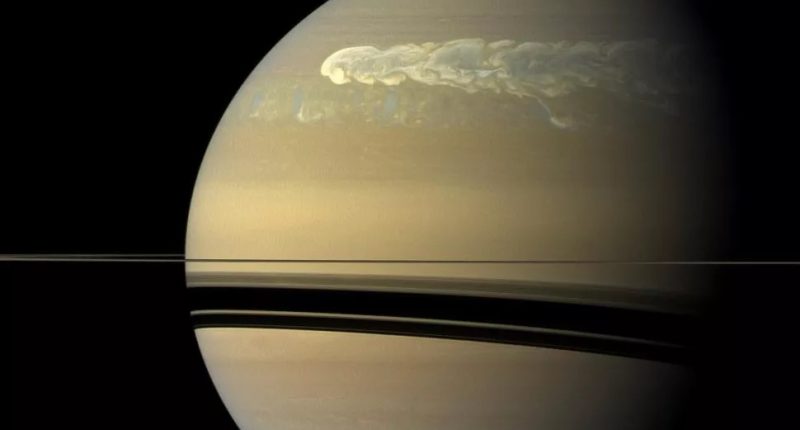MEGASTORMS have been leaving a radioactive footprint on Saturn and the reasoning for it has scientists stumped.
The discovery came after scientists looked at a usually bland-looking Saturn through a radio telescope on Earth and the planet glowed up with radioactive traces from up to 130 years ago.
The radio signals were transmitted to Earth using the Very Large Array radio telescope that is located in New Mexico, per an August 11 study published in the Science Advances journal.
The radio telescope showed glowing chemical traces from all six of Saturn’s recorded megastorms dating back to 1876 including a potentially new storm.
The radioactive traces were mostly showing up as high amounts of ammonia gas concentration.
It is currently unclear why the megastorms are leaving radioactive traces.
Saturn is a gas planet that is made up of about 94 percent hydrogen, and 6 percent helium along with small amounts of methane and ammonia.
“For most of the time, Saturn’s atmosphere looks hazy and featureless to the naked eye in contrast to Jupiter’s colorful and vibrant atmosphere,” per the study.
“This picture changes when we look at Saturn using a radio eye.”
The megastorms are another mystery to scientists as they can last for extremely long periods of time and are exceptionally large wrapping around the entire planet.
Most read in News Tech
A megastorm in 2010 lasted around 200 days – Saturn will also get frequent megastorms every 20-30 years.
Now, it is clear that the long intense storms are leaving long-lasting radioactive effects on the planet.
Although the radio waves are baffling scientists, the discovery can help scientists get a better understanding of Saturn.
Imke de Pater, a UC Berkeley professor emerita of astronomy and of earth and planetary sciences who worked on finding the radio waves, explained how.
“Radio observations help characterize dynamical, physical and chemical processes including heat transport, cloud formation and convection in the atmospheres of giant planets on both global and local scales,” Pater explained in a statement per Berkley News.
Lead study author Cheng Li an assistant professor at the University of Michigan also explained how the discovery will now “push boundaries” when understanding gas prominent planets.
“Understanding the mechanisms of the largest storms in the solar system puts the theory of hurricanes into a broader cosmic context, challenging our current knowledge and pushing the boundaries of terrestrial meteorology,” Li said in the Berkley News statement.










